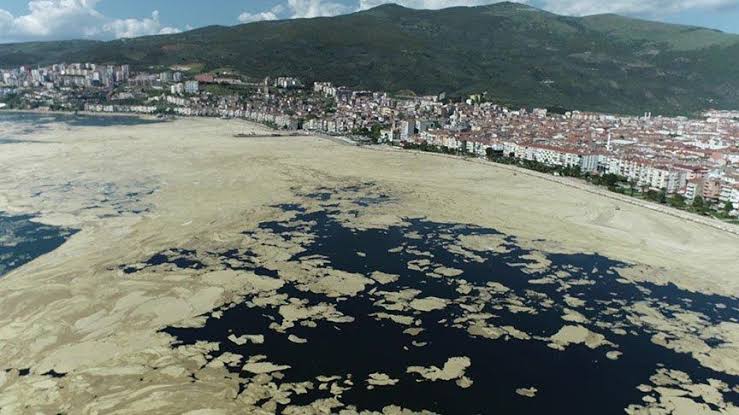
The “sea snot” that plagues Turkey’s Marmara sea could be a harbinger of whats to come for other bodies of water across the world, especially in the United States.
Sea snot occurs due to rising water temperatures that cause phytoplankton–a normally essential part of a body of water’s ecosystem– to overgrow and from a thick, congealed layer of mucilage called “sea snot.”
Oceanographer Mustafa Yucel has warned that what is occurring may not be isolated in Turkey. Other bodies of water are experiencing the same conditions that lead to the environmental catastrophe taking place in the Marmara Sea.
“For example, in the United States, [the] Chesapeake Bay, Gulf of Mexico, they are all like [the] Sea of Marmara — they are overburdened,” Yucel said.
Turkish President Recep Tayyip Erdogan has promised to “save” the Marmara Sea from “this mucilage calamity,” which is likely linked to the dumping of untreated sewage from Istanbul into the water as well as rising temperatures.
Erdogan has set up a team of 300 experts to investigate the cause of the slime, as well as potential solutions to the environmental disaster.
“My fear is, if this expands to Black Sea… the trouble will be enormous,” Erdogan stated.
The slime is pervasive in the Marmara Sea
Scientists argue that the sea snot will become a persistent problem in the region if the country does not take meaningful steps to tackle pollution and implement robust water purification systems.
A research team from the Middle East Technical University, located in Ankara, Turkey, has set out on a vessel to examine the sea snot phenomenon in the Marmara Sea first hand.
They team has already been out on the sea for a week, and they have found that the extent of the problem is enormous.
METU Professor of Maritime Sciences Barış Salihoğlu announced the team’s findings to the Demirören News Agency (DHA) on Friday, stating:
“We have seen a gel-like structure spreading across the sea and never encountered such a large mass before…
“Agricultural waste, industrial waste pouring into the sea from deltas, tributaries particularly worsened it. We need to halve the pollution at least. Cleaning the pollution at least by half would return oxygen levels to normal within five to six years. We need patience and also swift measures,” Salihoğlu said.
Solving the sea snot problem
While Erdogan expressed his dedication to fixing the sea sludge problem, solutions to the persistent problem may be elusive.
A major part of the issue is the global rise in water temperature, which has a direct relationship to climate change, something that can’t be tackled by one task force alone.
Many experts have offered potential solutions to the issue, however.
Veysel Eroğlu, lawyer and former minister of Forestry and Waterworks in Turkey, outlined a plan of action for halting the issue at a press conference.
“All municipalities discharging wastewater into the Marmara should have biological treatment plants. Nitrogen and phosphorus should be eliminated from industrial wastewater. We need an industry that creates less pollution and consumes less water…”
“We need to rehabilitate all streams pouring into the Marmara. We need to check the pollution caused by pesticides. Finally, we need a tight inspection for pollution and to set up a monitoring network against pollution in all streams and all sources of wastewater pouring into the sea,” Eroğlu stated.
See all the latest news from Greece and the world at Greekreporter.com. Contact our newsroom to report an update or send your story, photos and videos. Follow GR on Google News and subscribe here to our daily email!



